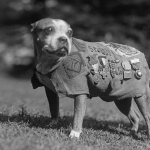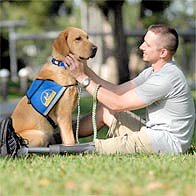On Veterans Day, we honor the men and women who have served in our armed forces. Let us also take a moment to consider the military working dogs who have served beside them—and the service dogs who have become part of veterans’ post-military lives.
Dogs of Home
Many soldiers go to their deployments leaving pets behind. Sadly, some soldiers cannot make arrangements for their pets’ care. In these cases, military personnel might be forced to give their pets up for adoption.
Nonprofit organizations such as Dogs on Deployment recognize this special need. They work to arrange foster care for the pets of deployed soldiers.
Dogs of War
Soldiers with dogs back home sometimes enjoy canine companionship while on active duty. Dogs have been in war zones since antiquity. War dogs fought alongside human soldiers in Ancient Greece. Dogs were used at the forefront of battle, to break the forces of the enemy line.
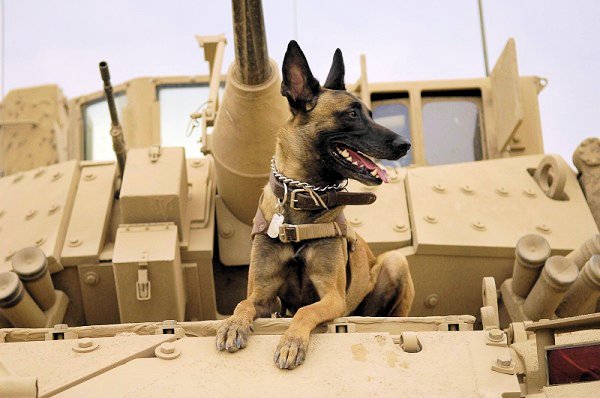
In the nearly thirty centuries since then, dogs have served in combat on behalf of many nations. They have fought as attack dogs, kept vigil, guarded camps, scouted territory, detected landmines, and delivered messages.
In World War I, many nations depended on canines to carry their combat communications. Over a million dogs were killed in action during the Great War.
Dogs were not always used defensively: During WWII, anti-tank dogs were deployed by the Soviet Union in an attempt to repel German tanks.
Often, the dogs returned home with their military handlers to civilian life. Almost all of the “war dogs” who served in the Pacific theater for the United States military were adopted by families after the war.
About five thousand dogs were part of the U.S. military forces in the Vietnam War. These dogs are credited with saving around ten thousand human lives. When the United States pulled out of Vietnam, however, over 4500 military working dogs remained. Unlike the practice of earlier wars, these dogs were either left in Vietnam or euthanized.
The new century turned the tide back again for military working dogs: In the year 2000, a law went into effect that offered former military working dogs the chance to be adopted. Usually, the dogs’ former handlers would adopt them. This change greatly decreased the number of military working dogs euthanized at the end of their service.
Organizations such as the United States War Dogs Association not only pay tribute to military working dogs, but work to ensure their continued care. USA War Dogs even facilitates the adoptions of former military working dogs.
One obstacle that needs to be overcome is finding the funding for U.S. military working dogs to be brought back to the United States to enjoy their retirement. Although a great deal of money is invested in acquiring and training buy propecia online without rx military working dogs, they are often labeled as “equipment” by the military. Provisions are not always made to bring them back home to the United States after their days of service have been completed.
In addition to their official duties, military working dogs act as mascots and morale boosters for troops assigned overseas. Often, the dogs and the people on their post form a very strong bond. Since adoptions of retired military working dogs are now possible, we sometimes see heartwarming news stories of post-war reunions between people and dogs who served together.
Dogs of Healing
After the war, the bond between human veterans and their canine helpers remains strong. Human and canine veterans who served together can still be a great support to each other after their tours of duty are over. This is also true for the families of soldiers lost in the war: Corporal Dustin Lee, killed in action, left behind nine-year-old Lex. Lex, a German Shepherd, was then adopted by Corporal Lee’s family. Lex visited with other veterans after the war, connecting with them and comforting them.
Comfort also comes from assistance dogs. Also known as “service dogs”, these canines help transform the lives of veterans. With years of special training, these dogs provide safety, independence, and companionship. One of their most critical tasks is picking up dropped objects for veterans who may be missing limbs, using crutches, or wheelchair-bound. This seemingly simple act enables veterans to live independently and relatively safely.
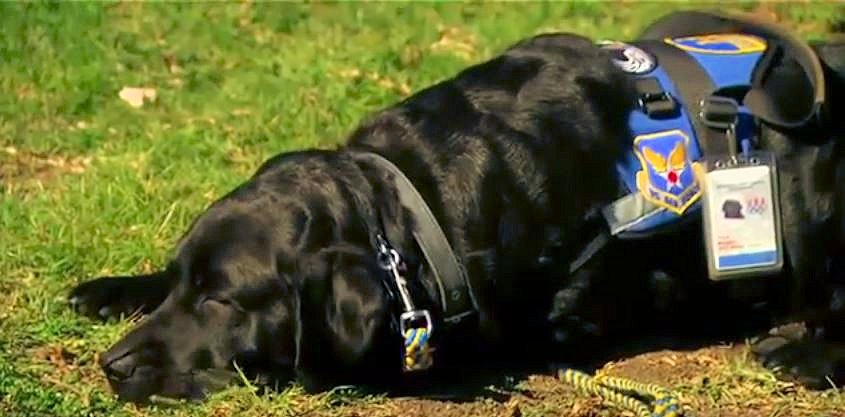
Trained assistance dog Nepal takes a well-deserved break from his duties.
Canine Companions for Independence offers the Wounded Veterans Initiative, supported by the PetSmart for Patriots program. The Wounded Veterans Initiative provides trained assistance dogs to veterans, without cost to the veterans themselves. These are veterans who have injuries such as lost limbs or permanent spinal cord damage. The dogs help veterans to live self-sufficiently, giving them added companionship and emotional support.
Often, assistance dogs act as a bridge between the wounded veterans and the outside world. Rather than seeing the veterans’ prostheses (or other evidence of their injuries), strangers are drawn to their dogs. This instantly opens up conversation and breaks down barriers.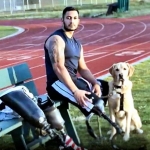
Dogs can even help heal the wounds we can’t see. Dogs have been instrumental in the coping and healing processes for veterans suffering with post-traumatic stress. Veterans often find that their need for PTSD medications is alleviated with a specially-trained canine companion in their lives.
A Best Friend for All Seasons
Dogs are by our side in war and in peace. As we remember our veterans on November 11th, let us not forget the canines who serve in combat zones—and those who help bring peace to veterans after the war is over.

